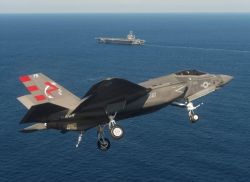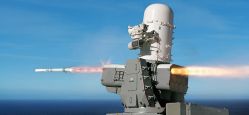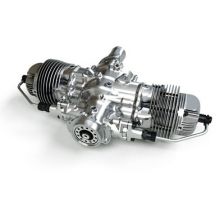US Navy Conducts F35 Carrier Variant Fighter Jets Developmental Tests

The US Navy’s carrier variant of the F35C fighter aircraft is undergoing second phase of developmental tests in the Atlantic Ocean.
The tests bring capabilities to the evolving carrier air wings embarked in our aircraft carriers. The F-35 increases operational flexibility and interoperability across services and with international partners, the US Navy said in a statement Tuesday.
The Navy is conducting developmental tests (DT2) to further integrate the aircraft within the air wing and the carrier. These tests include day and night carrier qualifications (CQ), night operations with the Generation III Helmet Mounted Display, and F-35 Joint Precision Approach and Landing System (JPALS) testing.
We remain on track to achieve initial operational capability by late 2018. By 2025, the Navy’s carrier-based air wings will consist of a mix of F-35C, F/A-18E/F Super Hornets, EA-18G Growlers, E-2D Hawkeyes, unmanned carrier-launched aircraft, and advanced helicopters and logistics aircraft.
The F-35C will deliver the stealth, advanced-sensor and improved command and control capabilities for our future air wing to do two important missions: assure access and project power, the statement said.
The brains of the F-35 is the all-sensor fusion system - an advanced suite of integrated electronics that is networked with the rest of the strike group and joint force, providing the critical capability of long-range identification and tracking.
Integrated sensors give the pilot exceptional situational awareness and tactical advantages against future threats. For example, the F-35 will be able to identify a particular type of aircraft or weapon rather than just seeing a blip on the radar. The F-35 will optimize stealth to push detection range further than ever before. The F-35C is needed to replace legacy F/A-18C/D Hornets (in service since the 80s) and complement the capabilities of the F/A-18E/F Super Hornet.











